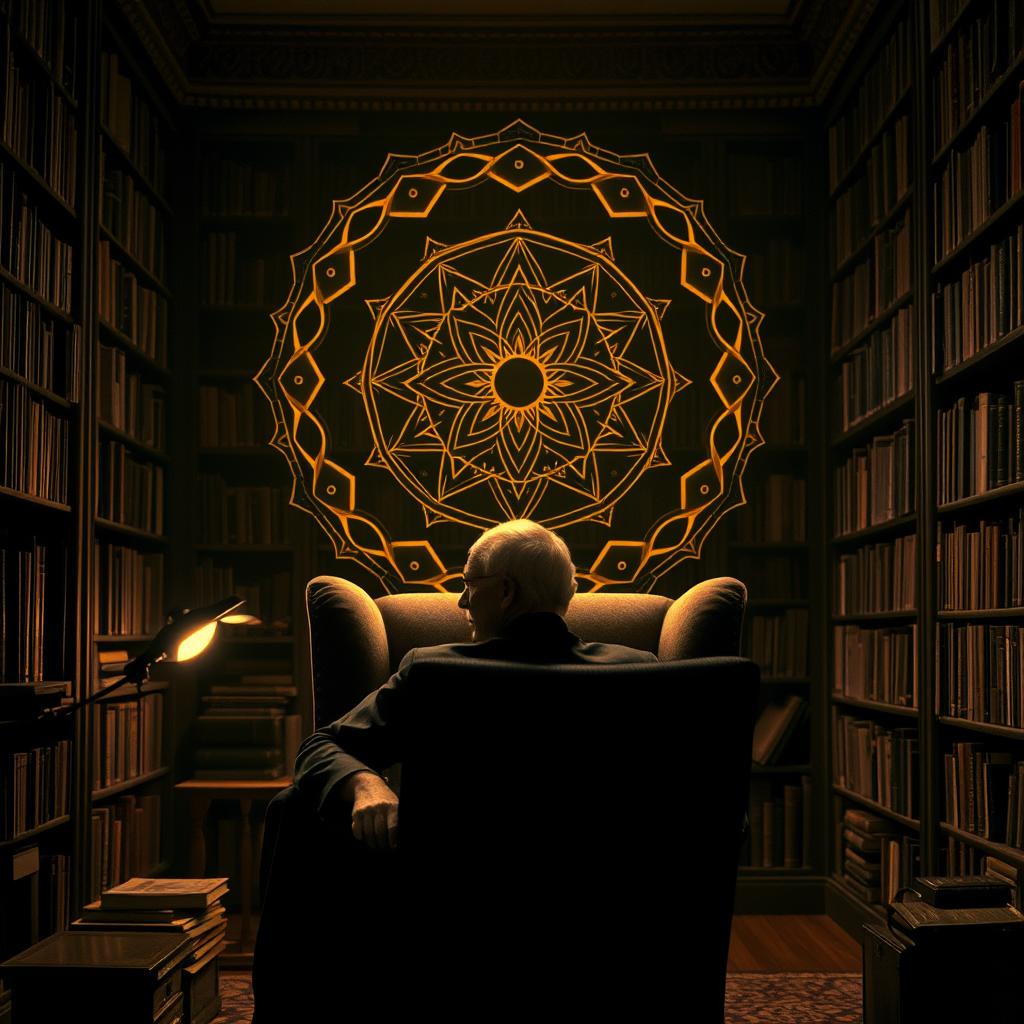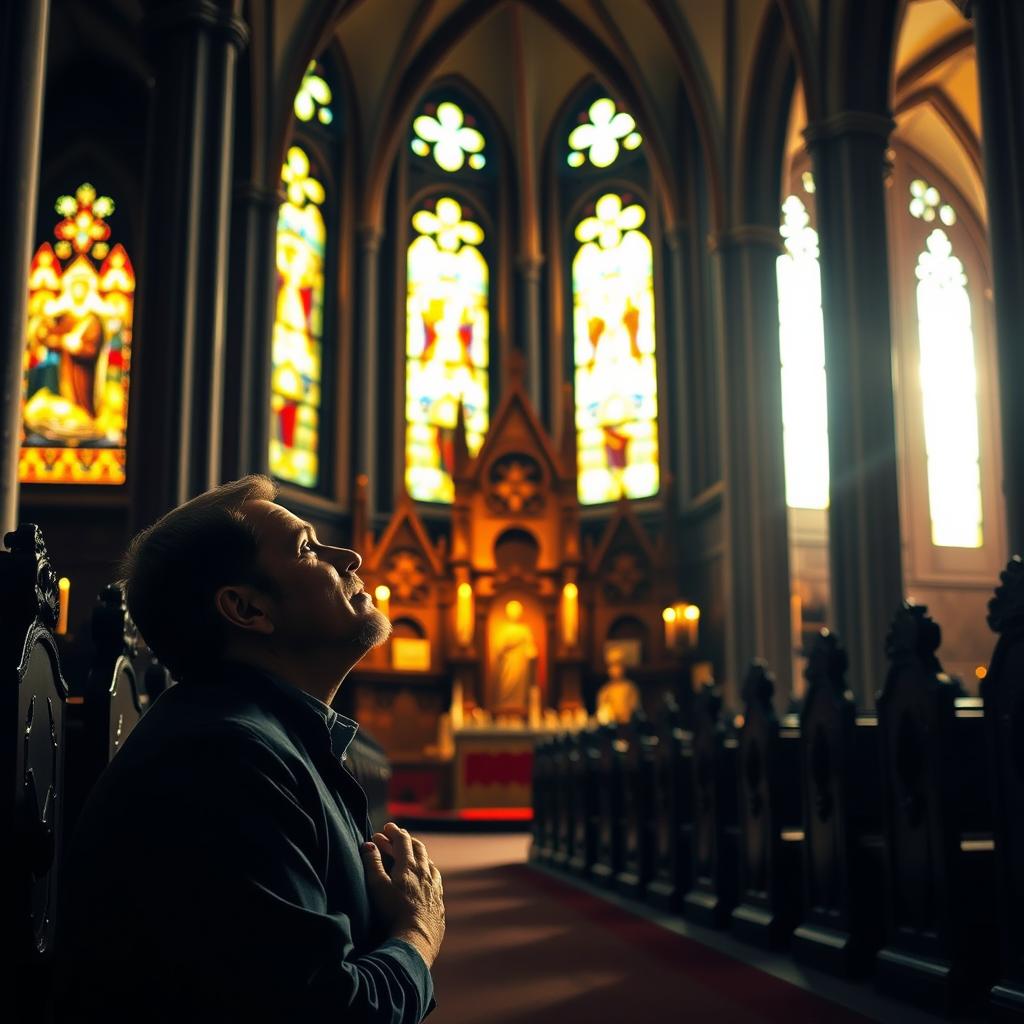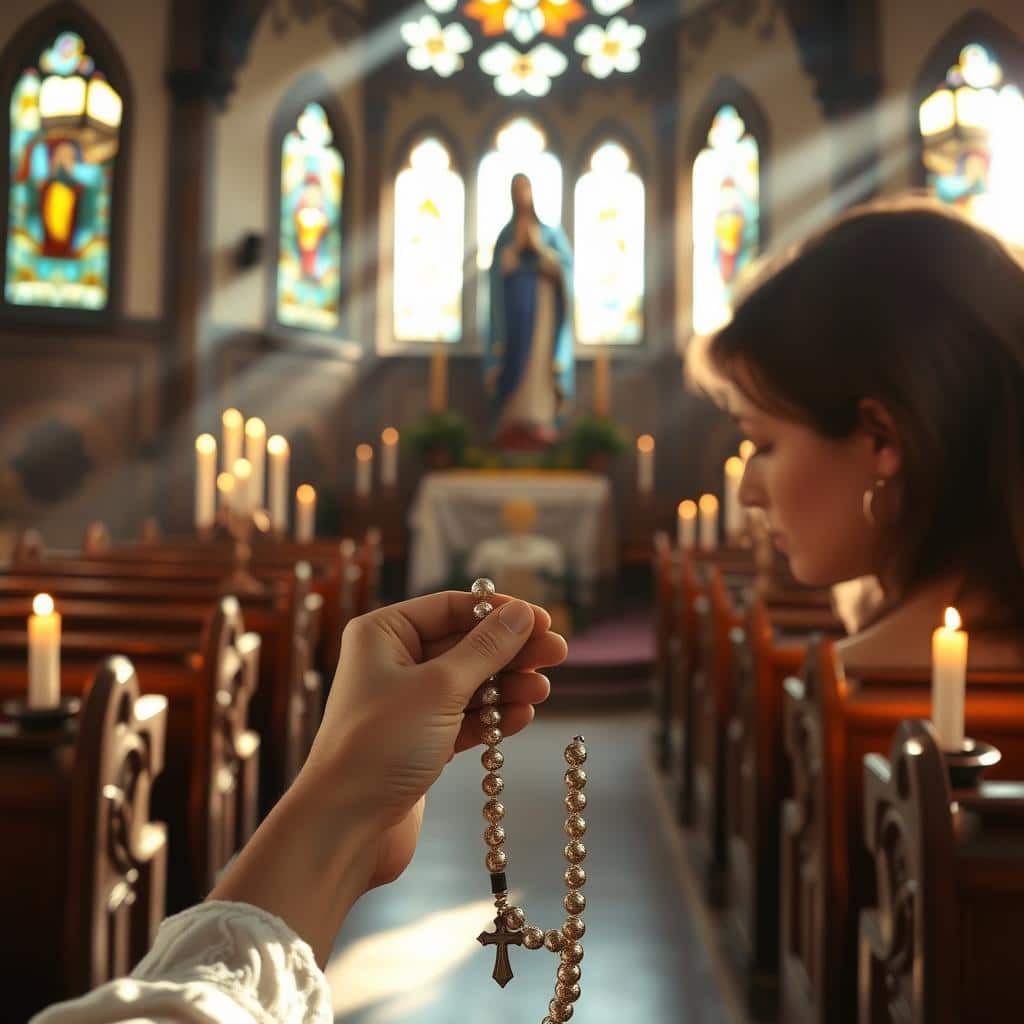The renowned psychologist Carl Gustav Jung made a huge impact on psychology. His theories on the human mind were shaped by Eastern philosophies, like Hinduism. This is where he first learned about karma.
Jung was deeply interested in the human mind and the universal laws that guide it. He saw a strong connection between karma and his own ideas on the collective unconscious and synchronicity.
The meeting of Jung’s psychology and karma’s philosophy is fascinating. It makes us think about the links between our minds and the law of cause and effect.
Catholic Weddings: Timeless Traditions, Personalized Celebrations
The Psychological Pioneer: Who Was Carl Jung?
Exploring Carl Jung’s world shows a complex and fascinating figure. He was a Swiss psychiatrist who changed the way we think about psychology. His work in analytical psychology is different from traditional Freudian psychoanalysis.
Early Life and Transformative Influences
Jung’s early years were filled with a deep curiosity about the human mind. His father, a clergyman, and his own dreams and subconscious thoughts greatly influenced him. Key influences on his work include:
- His study of philosophy, particularly the works of Nietzsche and Kant
- His exposure to various cultures during his travels
- His experiences as a psychiatrist, observing the diverse ways humans cope with psychological distress
These influences shaped Jung’s theories on the collective unconscious and archetypes.
Breaking from Freud: Jung’s Courageous Intellectual Journey
Jung started as a follower of Sigmund Freud but later disagreed with him. The main differences were:
- Jung believed in the collective unconscious, a concept Freud didn’t fully agree with
- They had different views on the role of spirituality in healing
- Jung focused on individuation, a journey towards self-realization
This split allowed Jung to create his own theories. His work greatly contributed to Jungian psychology.
Understanding Karma: Beyond Simple Cause and Effect
Karma is more than just cause and effect. It explores the deep side of human life. It has been seen and understood in many ways across cultures and beliefs.
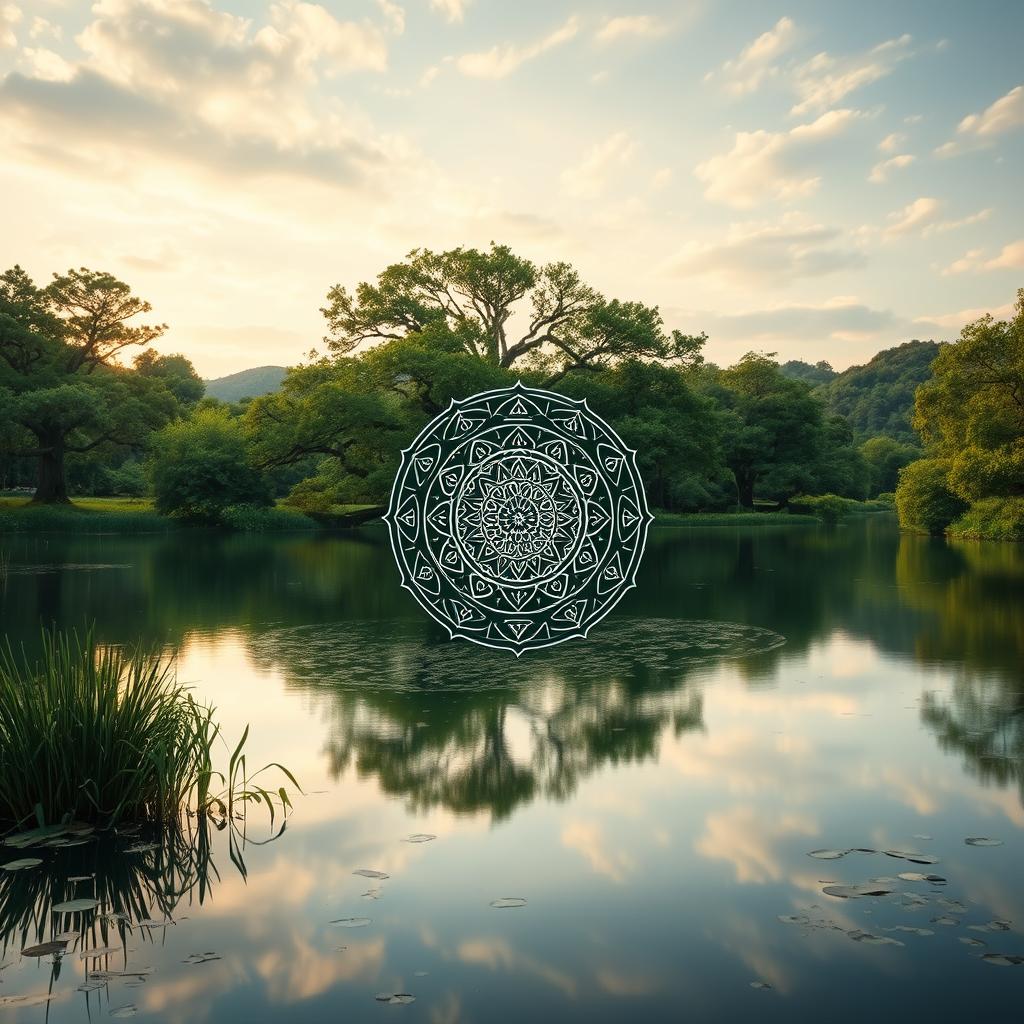
The Ancient Origins of Karmic Philosophy
Karma comes from Hinduism and Buddhism. It connects actions with their outcomes in this life or the next. The law of karma says every action, thought, and plan shapes our future.
“The law of karma helps us understand the universe and our role in it,” say spiritual leaders. It guides millions, influencing their beliefs and actions.
Karma’s Profound Meaning Across Different Cultural Traditions
Karma’s meaning changes across cultures. In some places, it’s seen as a strict rule. In others, it’s seen as something that can change with our actions and thoughts.
Karma isn’t just for the religious. It’s also studied in philosophy and psychology. The psychological implications of karma help us understand ourselves better.
Carl Jung and Karma: The Enlightening Connection
Carl Jung’s work and the idea of karma show a deep link between our minds and the universe. Jung was deeply interested in Eastern philosophy. This interest greatly shaped his theories.
Jung’s Fascination with Eastern Philosophy
Carl Jung was fascinated by Eastern philosophies like Buddhism and Hinduism. He saw the value of karma in understanding human behavior and the collective unconscious. His writings often mention the Upanishads and the Tao Te Ching.

Parallels Between Jungian Psychology and Karmic Principles
Jungian psychology and karma share many similarities. Both see our actions as influencing our future and the collective unconscious. Below, we see some of these similarities.
| Concept | Jungian Psychology | Karmic Principles |
|---|---|---|
| Collective Unconscious | Shared reservoir of archetypes common to all humans | Karmic memory influencing collective destiny |
| Personal Actions | Influence on personal psyche and shadow | Generate karma affecting future experiences |
| Synchronicity | Meaningful coincidences reflecting deeper connections | Karmic forces manifesting in meaningful events |
Looking at Jung’s work and karma, we see a complex web of connections in human life. This understanding helps us grow and evolve spiritually with compassion and mindfulness.
The Collective Unconscious and Karmic Memory
Carl Jung believed in a layer of the mind called the collective unconscious. It holds universal symbols and memories. This idea helps us see how human psychology and karmic memory are connected.

Jung’s Revolutionary Concept of the Collective Unconscious
Carl Jung said we all share a collective unconscious. It’s filled with universal symbols, or archetypes. This idea changed psychology by showing we all share certain experiences.
Ancestral Memories and Inherited Wisdom
The collective unconscious holds ancestral memories and inherited wisdom. These are passed down through generations. We can’t directly access them but they show up in dreams, myths, and legends.
Universal Symbols Across Cultures
Universal symbols are a key part of the collective unconscious. Symbols like the mother figure or the trickster appear in dreams and myths worldwide. This shows we all share a common human heritage.
How Collective Memory Mirrors Karmic Imprints
The collective unconscious is like karmic imprints. It shows how past experiences shape our present and future. Both ideas say our experiences are connected, with the collective unconscious explaining karmic patterns.
Jung’s work helps us understand karmic imprints in our minds. It gives us a glimpse into the collective aspects of human nature.
Archetypes as Karmic Patterns in Human Experience
The study of Jungian archetypes and karmic philosophy is quite interesting. Carl Jung believed that certain symbols and patterns are in our collective unconscious. These influence our thoughts, feelings, and actions.
Understanding Jung’s Transformative Archetypes
Jung’s archetypes are ancient, universal patterns found across cultures. They shape our experiences. These archetypes can guide us toward life lessons or experiences.
The Hero’s Journey as Karmic Evolution
The Hero’s Journey is a famous archetype. It shows an individual’s path to self-discovery and change. This journey is like karmic evolution, where one faces challenges and grows, resolving past debts.
The Wise Elder as Karmic Wisdom
The Wise Elder archetype is about wisdom and experience. It represents the knowledge gained over many lifetimes or karmic cycles. This archetype helps us grow spiritually.
Archetypes as Expressions of Karmic Tendencies
Archetypes show our karmic patterns, affecting our likes, fears, and dreams. By understanding these archetypes, we can see our karmic tendencies. This helps us learn the lessons we need to learn.
| Archetype | Karmic Tendency | Life Lesson |
|---|---|---|
| The Hero | Courage and determination | Overcoming fear and achieving success |
| The Wise Elder | Wisdom and spiritual guidance | Embracing wisdom and guiding others |
| The Innocent | Purity and optimism | Maintaining faith and trust in the universe |

The Shadow Self and Karmic Debt
Carl Jung’s psychology helps us understand our shadow self. This part of us includes our hidden fears and desires. It affects our karmic journey.
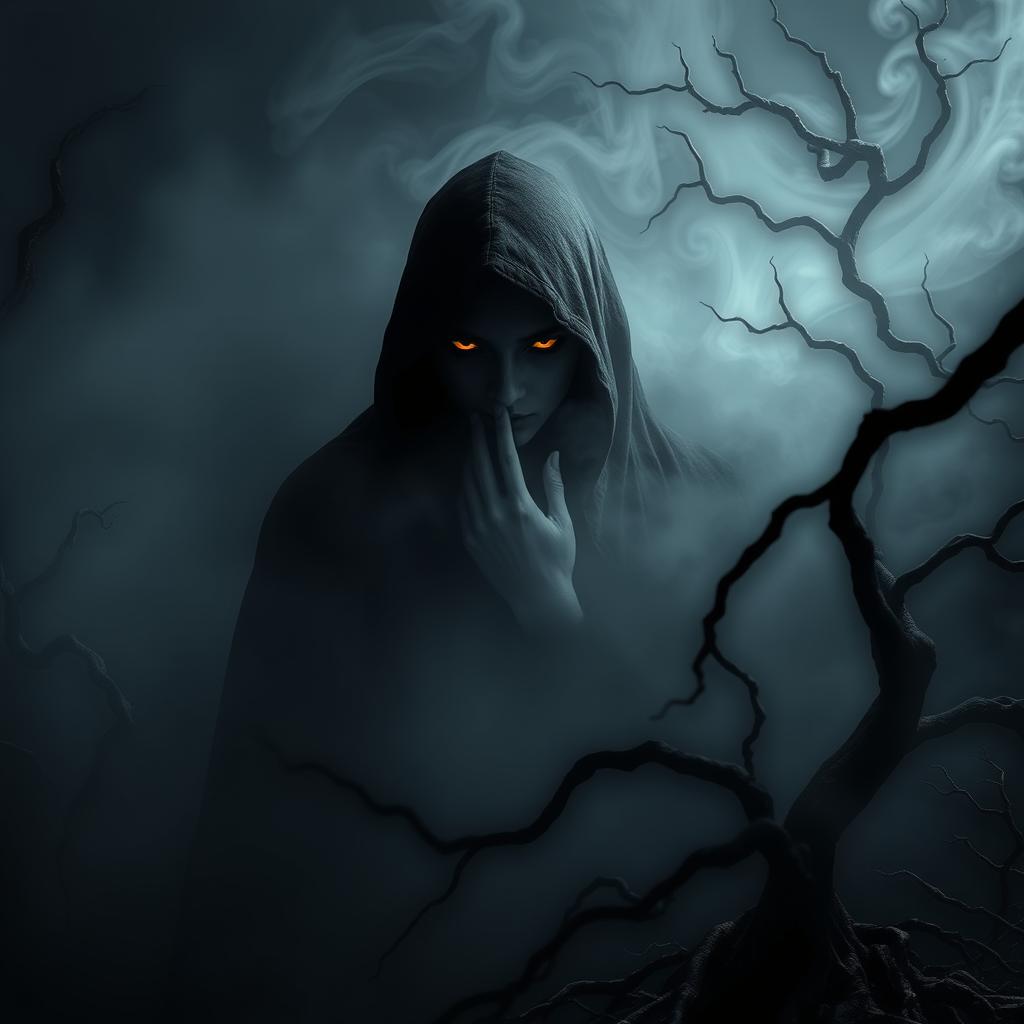
Jung’s Shadow Concept: Embracing Our Darkness
Carl Jung talked about the shadow. It’s the parts of us we hide, often because society doesn’t accept them. This includes thoughts, feelings, and impulses we’re not aware of.
“The shadow is a moral problem that challenges the whole ego-personality.” – Carl Jung. This quote shows why facing our shadow is key to growth and inner peace.
Shadow Work as a Path to Karmic Resolution
Shadow work helps us deal with karmic debt. Karmic debt is the negative energy from past experiences that affects us now. By facing our shadow, we can start to clear these burdens.
Recognizing Recurring Patterns
The first step in shadow work is noticing patterns in our lives. These patterns show us unresolved issues or hidden parts of ourselves. Seeing these patterns helps us understand our karmic debt.
Healing Through Conscious Integration
Healing comes when we integrate our shadow. This means we accept our hidden parts as part of us. It helps us release the negative energy tied to our karmic debt.
| Shadow Work Practices | Karmic Benefits |
|---|---|
| Journaling and self-reflection | Release of negative patterns |
| Meditation and mindfulness | Increased self-awareness |
| Seeking professional therapy | Deeper understanding of karmic influences |
Synchronicity: Jung’s Answer to Karmic Connection
Synchronicity, introduced by Carl Jung, offers a new view on how our experiences are linked. It’s about “meaningful coincidences” that show the universe is more than just chance.

Meaningful Coincidences
The idea of synchronicity says events are connected, not just random. “Synchronicity is a meaningful coincidence of two or more events where something other than the probability of chance is involved,” Jung said. It makes us rethink time, space, and how things happen.
Synchronicity as a Manifestation of Karmic Forces
Jung’s work on synchronicity links psychology and spirituality, especially with karma. Synchronistic events show how karma works in our lives. The alignment of inner and outer events through synchronicity can reveal an individual’s karmic path or purpose.
Personal Examples of Synchronistic Events
Many people have had synchronistic experiences, like running into old friends or getting calls from people they were just thinking about. These moments often feel like signs from the universe.
Interpreting Synchronicities in Daily Life
To understand synchronicities, we must see beyond what’s obvious. It means being aware of our surroundings and thinking about their deeper meaning.
“The synchronistic phenomenon is a reminder that our reality is not just physical but also psychological and spiritual.”
By noticing these meaningful coincidences, we can learn more about our karmic journey and how everything is connected.
Individuation and Spiritual Evolution Through Life’s Journey
Carl Jung’s idea of individuation is a deep journey to self-discovery and spiritual growth. It’s about becoming whole and true by uniting opposites within oneself. This journey is key to Jung’s psychology and ties closely to spiritual growth.
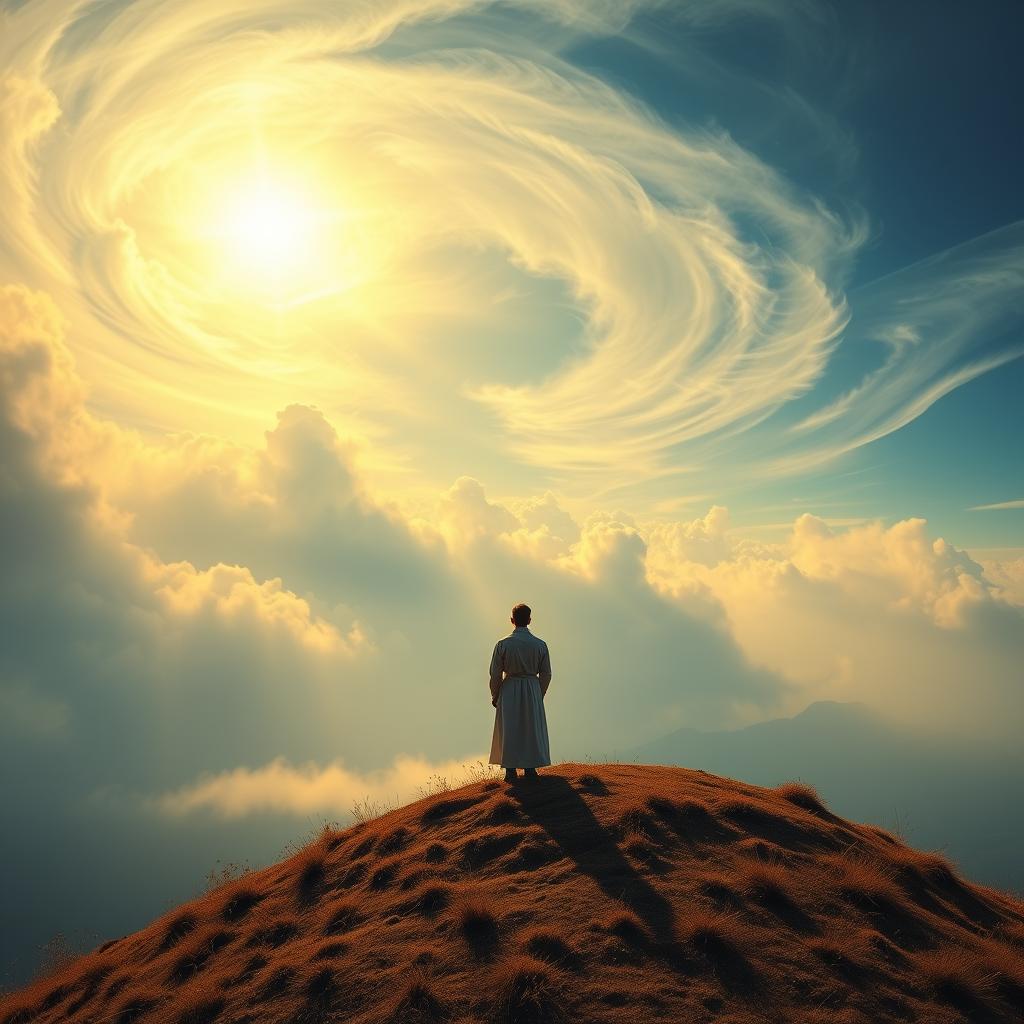
Jung’s Process of Becoming Whole and Authentic
Jung’s individuation involves merging the unconscious and conscious minds. This merge helps people understand their true nature and find their authentic self. They do this by exploring their unconscious through dreams and active imagination.
Individuation as Spiritual Growth Through Karmic Lessons
Individuation is also a path to spiritual growth, where one learns from karmic lessons and grows spiritually. By facing and integrating their shadow, people can break free from karmic patterns. This spiritual growth is a core part of Jung’s theory, showing the value of self-reflection and personal change.
The path of individuation is a lifelong journey that needs patience, courage, and commitment. By taking this journey, people can gain a deeper understanding of themselves and the world. This leads to a more genuine and fulfilling life.
Dreams, Active Imagination, and Accessing Karmic Insights
Carl Jung’s work on dreams and active imagination is groundbreaking. It helps us understand our karmic journey. By looking into our dreams, we can see the karmic patterns that shape our lives.
Jung’s Transformative Approach to Dream Analysis
Jung saw dreams as a way to peek into our unconscious mind. They show us parts of ourselves and our karmic tendencies. Through dream analysis, we can find and work on issues that affect our karmic debt.
Dream Symbols as Karmic Messages
Dream symbols hold deep meanings for our karmic journey. For example, dreams about chasing or running away might point to karmic issues we need to face. By understanding these symbols, we can learn more about our karmic path.
Dream Journaling Techniques
Keeping a dream journal is a great way to track and analyze dreams. Writing down dreams right after waking helps keep the details and feelings fresh. This makes it easier to dive deep into the karmic messages in our dreams.
Accessing Karmic Information Through Dreams and Imagination
Jung’s active imagination technique helps us connect with our unconscious mind. It involves creative activities like drawing, writing, or talking to dream characters. This practice can help us understand and deal with our karmic issues.
“The dream is a little hidden door in the innermost and most secret recesses of the soul.” – Carl Jung
By using dream analysis and active imagination, we can uncover valuable karmic insights. This helps us grow personally and spiritually.
| Technique | Description | Karmic Benefit |
|---|---|---|
| Dream Journaling | Recording dreams to analyze symbols and themes | Uncovering karmic patterns and unresolved issues |
| Active Imagination | Engaging with the unconscious through creative expression | Confronting and resolving karmic debt |
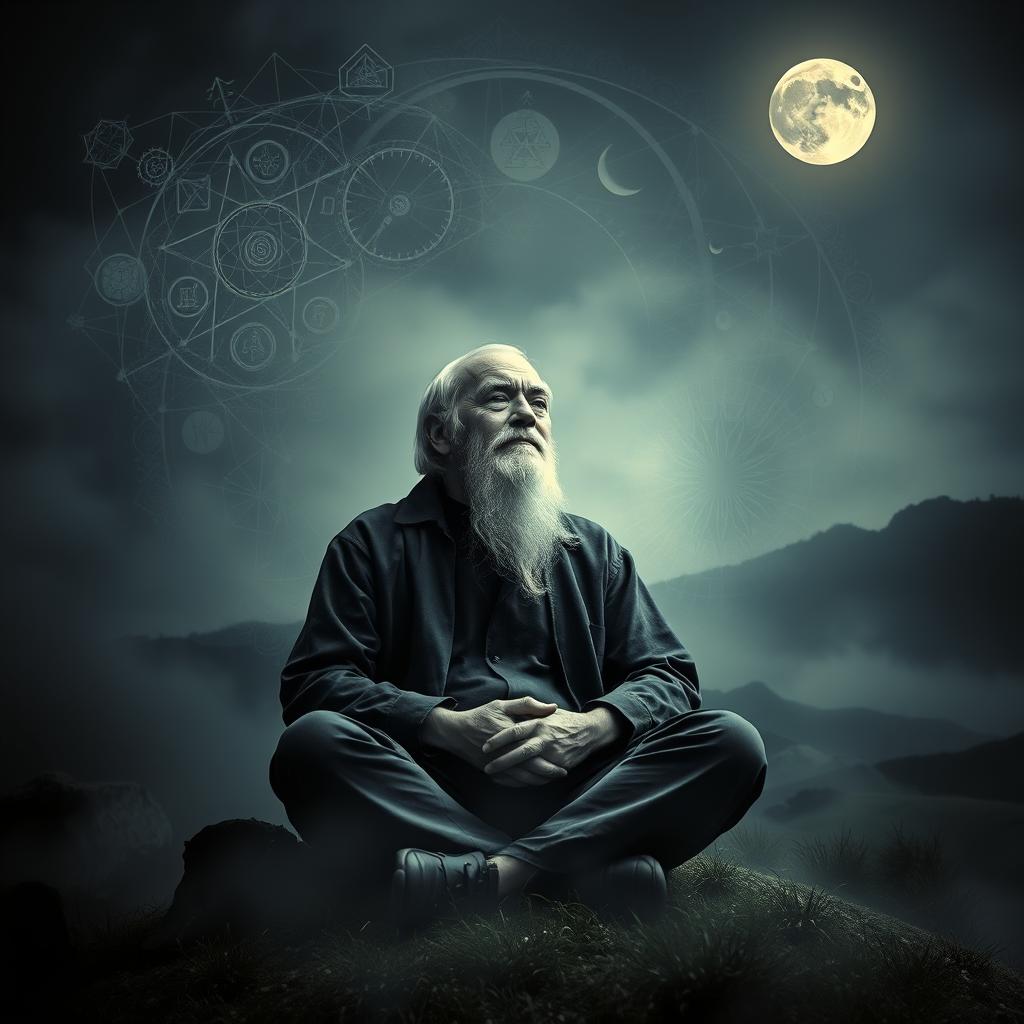
The Persona and Karmic Masks We Wear
In Jungian psychology, the persona is like the masks we wear. These masks are linked to our karmic experiences. Understanding the persona helps us see how we present ourselves and how this affects our karmic journey.
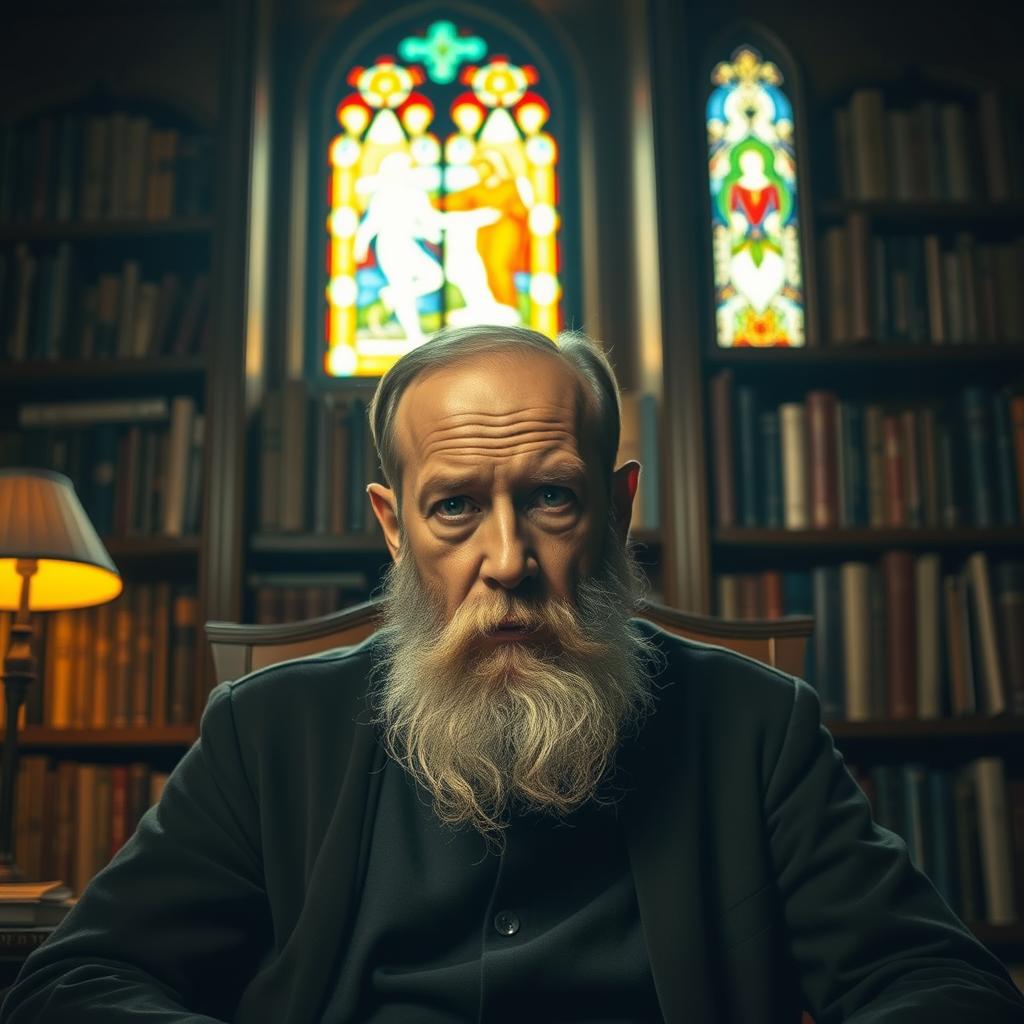
Social Masks and Interaction
Carl Jung said the persona is a social mask or image we show the world. It’s not just a simple cover-up. It’s a complex structure that shapes our interactions and relationships.
The persona is shaped by many things, like society’s expectations and our personal experiences. It can protect us but also limit us if we stick to it too much. Knowing about the persona helps us understand how we deal with others and how these interactions show our karmic patterns.
Reflecting and Perpetuating Karmic Patterns
Our social masks can show and keep karmic patterns alive by guiding our choices and experiences. If we don’t see how our persona works, we might keep going in circles. By knowing our persona and its effects, we can start to break free from these patterns.
- Recognizing the masks we wear
- Understanding the societal and cultural influences on our persona
- Exploring how our persona reflects our karmic tendencies
Looking into our persona and its connection to our karmic experiences is the first step to being more real and free. This journey means recognizing our masks, knowing where they come from, and letting go of those that hold us back.
Anima/Animus and the Karmic Dance of Relationships
Carl Jung’s idea of the anima and animus shows how inner masculine and feminine energies affect our karmic relationships. This isn’t just a figure of speech; it’s real in our minds and spirits. It shapes how we meet and connect with others.
Inner Masculine and Feminine Energies
Jung believed everyone has both masculine and feminine sides. The animus, or the masculine side in women, and the anima, or the feminine side in men, are vital. They influence our thoughts and how we relate to others.

Karmic Attractions and Healing Through Relationship Patterns
Our anima/animus can draw us into karmic attractions. These are patterns that feel both familiar and tough. Knowing these patterns helps us heal and grow.
Soul Connections and Karmic Partners
Some relationships are karmic or soul connections. They’re meant to help us learn and grow. Spotting these connections helps us be more thoughtful in our relationships.
Breaking Destructive Relationship Cycles
By understanding our karmic tendencies and the roles of our anima/animus, we can escape bad cycles. This lets us build better, more rewarding relationships.
| Aspect | Description | Karmic Influence |
|---|---|---|
| Animus | Masculine energy in women | Influences attraction to masculine partners |
| Anima | Feminine energy in men | Influences attraction to feminine partners |
| Karmic Patterns | Repeating relationship dynamics | Can lead to growth or stagnation |
The Self Archetype and Aligning with Karmic Destiny
Carl Jung’s Self archetype gives us deep insights into our journey towards being whole and fulfilling our karma. The Self archetype is the core of our personality, showing us completeness and integration.
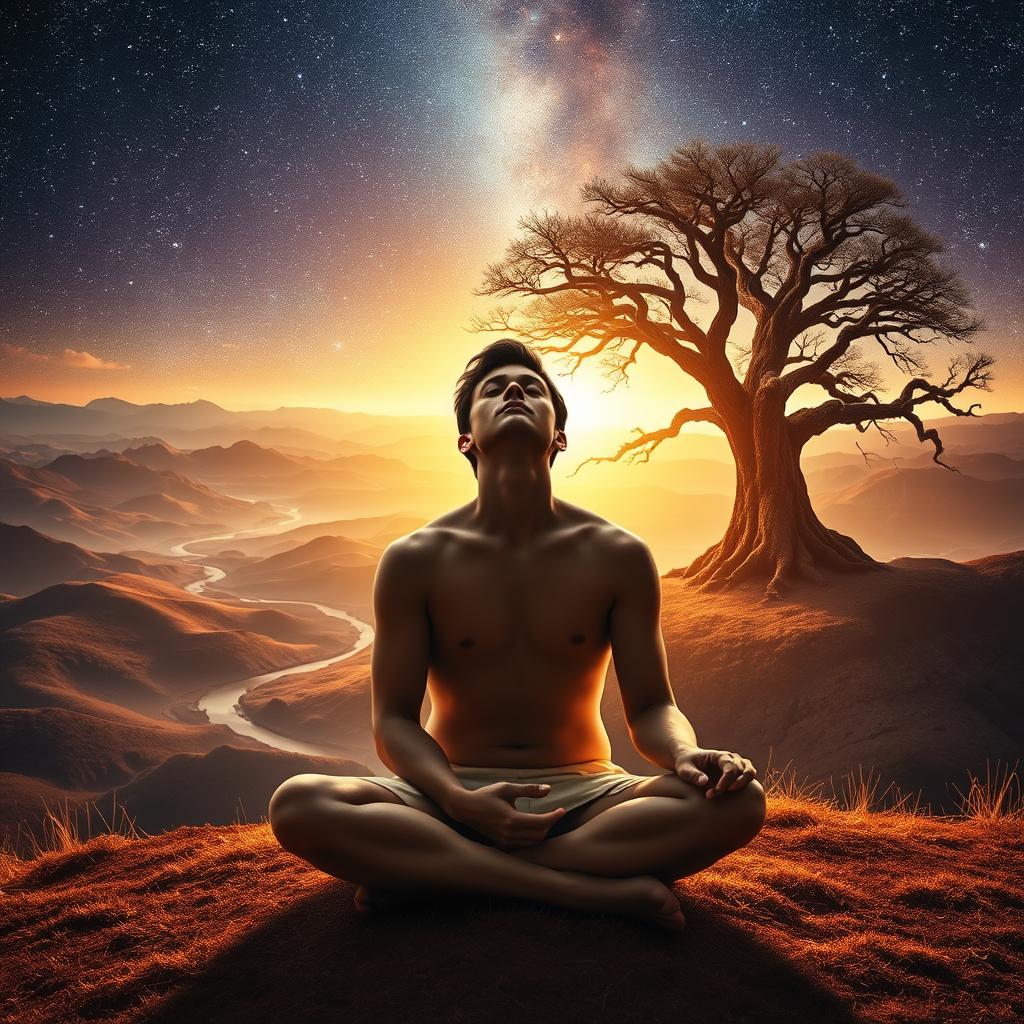
Ultimate Wholeness: Jung’s Concept of the Self
Jung believed in individuation, where we merge our opposites to become whole. This is key for growing and finding ourselves.
The Self archetype is the ultimate symbol of being whole. It guides us to find our true potential and life’s purpose.
Key aspects of the Self archetype include:
- Integration of opposites
- Guiding principle for individuation
- Symbolism of wholeness and completeness
Discovering and Embracing One’s Karmic Purpose
Finding our karmic purpose is vital for aligning with our destiny. Jung said we must listen to our unconscious and follow the Self archetype’s guidance.
To embrace our karmic purpose, we need to understand ourselves and our role in the world. We must recognize our karma’s patterns and make choices that align with our true purpose.
The process of discovering and embracing one’s karmic purpose can be facilitated through:
- Self-reflection and introspection
- Dream analysis and active imagination
- Engagement with the unconscious mind
By following the Self archetype and our karmic purpose, we can live a more authentic and fulfilling life. We realize our potential and help others.
Modern Psychological Practices Inspired by Jung and Karma
Carl Jung’s ideas and karmic principles have led to new ways of healing. These methods help us grow spiritually and understand ourselves better.

Transpersonal Psychology: Beyond the Personal Self
Transpersonal psychology looks at the spiritual side of us. It goes beyond just our personal selves. It sees us as connected to each other and influenced by our past lives.
Psychospiritual Therapy Approaches for Soul Healing
Psychospiritual therapy combines psychology and spirituality. It helps us deal with our past and grow as souls. This way, we find our true purpose and feel better about ourselves.
Mindfulness and Shadow Integration Practices
Mindfulness and shadow integration help us face our hidden thoughts and feelings. By accepting our shadow, we can break free from old patterns. This leads to a more complete and accepting self.
These new ways of thinking, inspired by Jung and karma, are powerful for change. They use mindfulness and explore our shared unconscious. This helps us understand ourselves and the world around us.
- Transpersonal psychology expands the scope of healing beyond the individual self.
- Psychospiritual therapy addresses the spiritual dimensions of human suffering.
- Mindfulness and shadow integration promote self-awareness and release from karmic patterns.
Scientific Perspectives on Jung and Karma in the Modern World
Jung’s ideas and karmic philosophy are being looked at again with new science. This mix is giving us fresh views on what it means to be human and how we think.
Contemporary Research on Consciousness and Memory
Studies on consciousness and memory have shed light on Jung’s collective unconscious. They show that our minds are more than just in our heads. This fits with the idea of karma.
Quantum Physics and Non-Local Consciousness Connections
Quantum physics talks about how we’re all connected, which is key in Jung’s work and karmic beliefs.
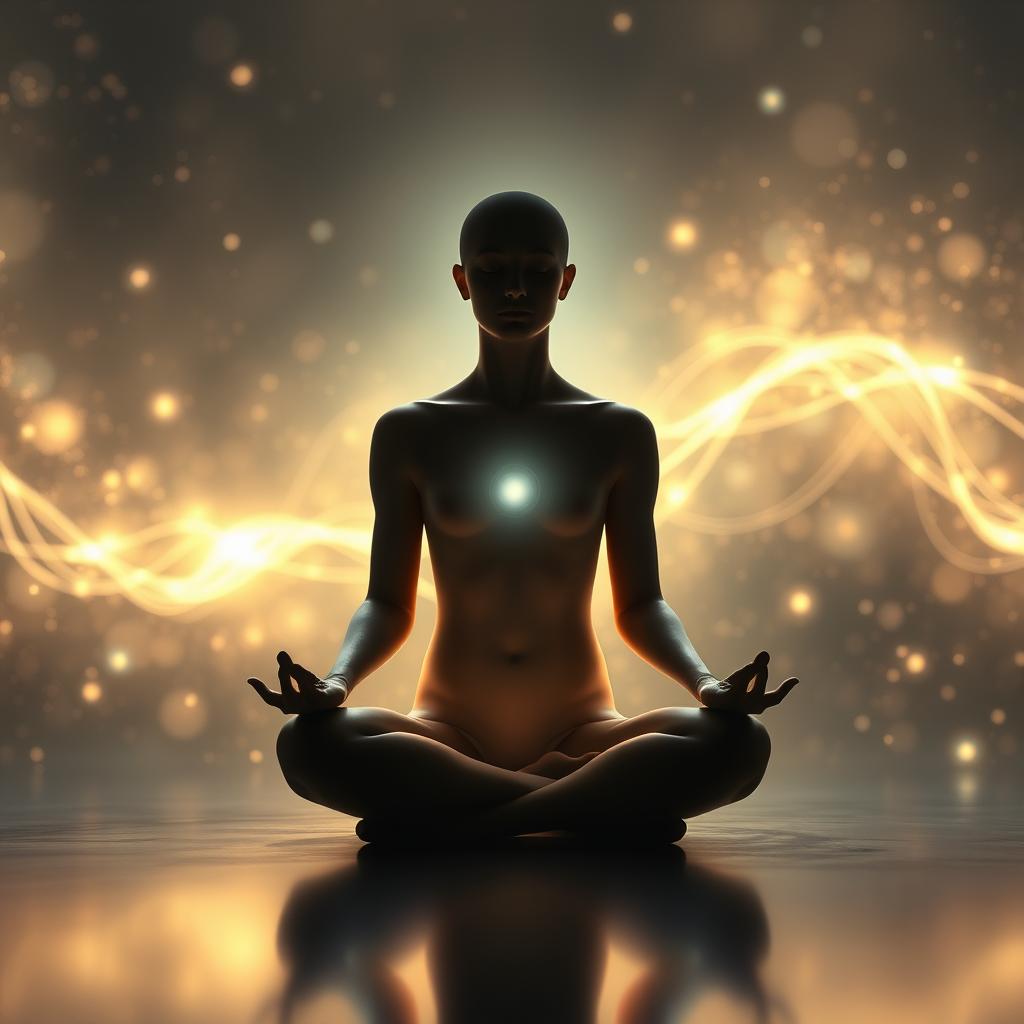
Entanglement Theory and Karmic Bonds
Entanglement theory shows how particles can be linked, even apart. It’s like karmic bonds between people, showing we’re all connected in ways we can’t see.
The Observer Effect and Creating Karmic Reality
The observer effect in quantum physics says our thoughts shape reality. This idea matches the karmic belief that our actions shape our future.
| Concept | Jungian Psychology | Karmic Philosophy |
|---|---|---|
| Consciousness | Collective Unconscious | Karmic Imprints |
| Interconnectedness | Archetypes | Karmic Bonds |
Practical Applications: Living with Jungian and Karmic Awareness
Jungian theory and karmic law meet in a rich area for exploring our inner selves. This blend offers a path for deep self-discovery and growth.
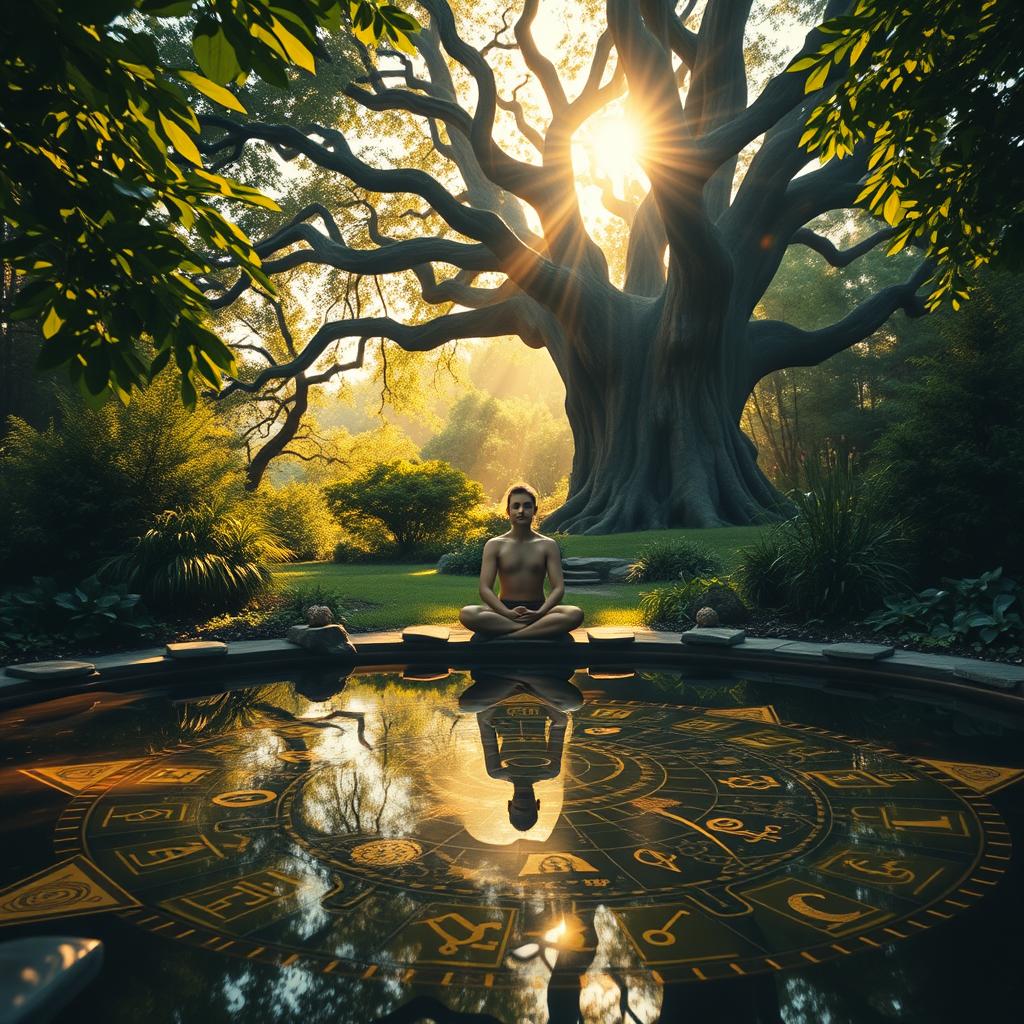
Transformative Self-Reflection Practices
Self-reflection is key to grasping our inner workings and karmic ties. Journaling, meditation, and active imagination reveal our hidden selves. They help us express ourselves more authentically and fully.
- Meditation: Cultivates mindfulness and inner awareness
- Journaling: Uncovers patterns and emotions related to karmic experiences
- Active Imagination: Engages with the unconscious, promoting integration of the psyche
Building Conscious Relationships Through Karmic Understanding
Grasping the karmic sides of our conscious relationships can make them more meaningful. It helps us interact less reactively. Recognizing karmic patterns lets us connect with empathy, patience, and awareness.
“The meeting of two personalities is like the contact of two chemical substances: if there is any reaction, both are transformed.” – Carl Jung
This view sees relationships as chances for growth and healing, not just social ties.
Ethical Decision-Making with Karmic Consciousness
Decisions with karmic awareness mean thinking about how our actions affect us and others. This mindset promotes responsibility and compassion. It guides us to choices that bring harmony and balance.
By blending Jungian and karmic insights into our lives, we face challenges with wisdom and grace.
The Enduring Legacy: How Jung’s Wisdom Illuminates Our Karmic Journey
Carl Jung’s theories deeply influence how we see the human mind and its link to karma. His work helps us understand personal growth and change. It shows how our experiences are tied to karmic patterns.
Jung talked about the collective unconscious, archetypes, and becoming whole. His views on the shadow self and integrating our darker sides match the idea of clearing past debts. This shows how our past affects us.
Jung’s wisdom calls us to explore ourselves and the karmic forces in our lives. By doing this, we gain a deeper understanding of who we are and the world. This leads to a more real and fulfilling life.
